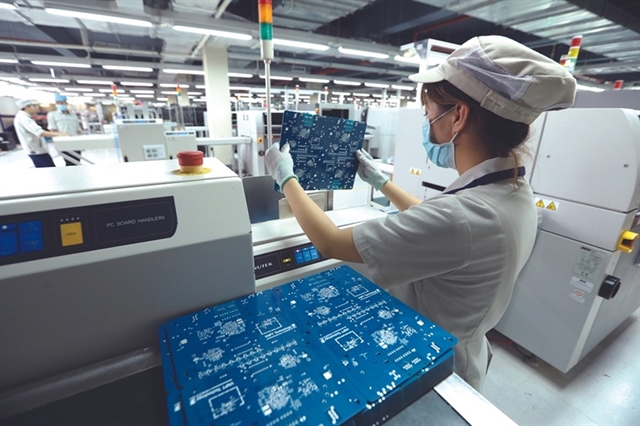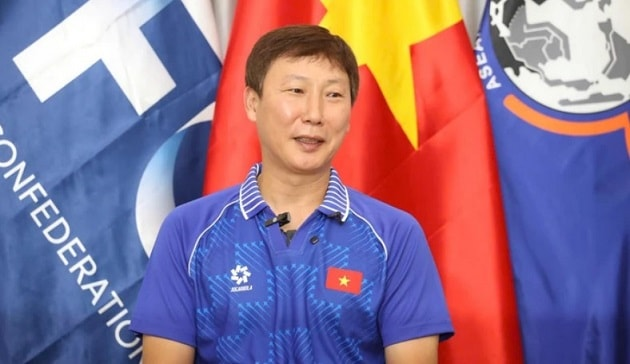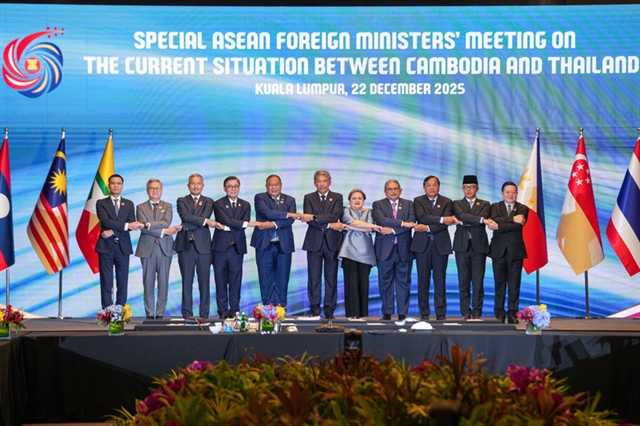 Society
Society

 |
| A student in the career orientation class organised by Long Khánh on the road and Văn Hiến High School in Long Khánh City, Đồng Nai Province. — Photo courtesy of Long Khánh on the road |
Anh Trang
ĐỒNG NAI — A third-year university student, Trần Thu Thảo, has spent three years supporting disadvantaged students in her local area.
In 2020, Thảo began the Long Khánh on the Road project to create valuable extra-curricular activities for students and equip them with essential life skills and knowledge that could help them in the future.
The project started in Long Khánh City of Đồng Nai Province which is Thảo’s hometown. When Thảo came back home because of the pandemic in 2020, she helped two students with their online studying. By listening to their concerns and seeing their potential, she has seen the limit of the current local education for student development: the lack of extra-curricular activities and student support.
Acknowledging the current resources in the locality, Thảo decided to establish a project which helps schools and local youth unions support students.
“'Long Khánh on the Road' is not an independent project, but a supporting project for schools and youth unions in providing student support,” Thảo said.
Supporting students in the B2B model
Long Khánh on the Road's main activities are providing career orientation and project-based learning models to students in local high schools.
They partnered up with high schools, offered a class or a module to students, and helped teachers to organise them. Their ambition is to leave 100 per cent of the model and its content to the high schools within one to three years.
The project also cooperates with the Youth Union in Long Khánh to organise a yearly summer camp for 50 students to learn about the history and culture of the local area. Its plan is by 2024-2025, the local Youth Union would be able to organise summer camps by themselves.
“Normally, projects would go with B2C (business to customer) model, and help is provided directly to students," Thảo said. "In this way, the community cannot be aware and understand the importance of the project.”
“We decided to go on the different way, which means we have to find our way.”
Thảo recalled difficulties when doing the project as a B2B (business to business) model. In that way, she had to approach local high schools and get their approval to adopt her solution.
“Without trust and connection, it is hard to approach schools in the local area,” Thảo said.
“In the beginning, I had to approach teachers that are interested in our programme, build trust with them, and then get them to introduce me to the school.”
Kim Giao is a teacher at Văn Hiến High School, one of the high schools that have partnered with Long Khánh on the Road four times. She recalled being assigned to work with the project and their new model for the first time.
“I doubted their abilities at first,” Giao said. “But they changed me with their spirit, willingness to contribute, and positive energies.”
“Their programmes bring much to my students in many aspects. Especially when they can invite experts to help students. It is an amazing thing that not many schools and organisations can do, but they can.”
From a local project to the social enterprise
Up to now, Long Khánh on the Road has helped 2,700 students in 10 local schools. Not only limited to Long Khánh, but the project has also expanded its influences to Vĩnh Long, Đà Nẵng and Hà Nội.
Besides activities partnered with local schools and the local Youth Union, they also organised online career orientation class, as well as provided skill lessons and direct coaching for students in localities across Việt Nam.
In the third year of launching, the project had sufficient funds to offer its members an allowance.
“We are moving from the Non-Profit Organisation (NPO) to a social enterprise to generate funds for local activities,” Thảo said, mentioning that they are working with private and international schools to sell their model.
“We want to transfer from Long Khánh on the Road to the On the Road model, to reach as many local high schools in localities as possible, and what I want is to utilise the local resources to help as many students as possible”. — VNS




